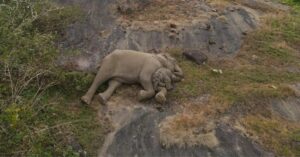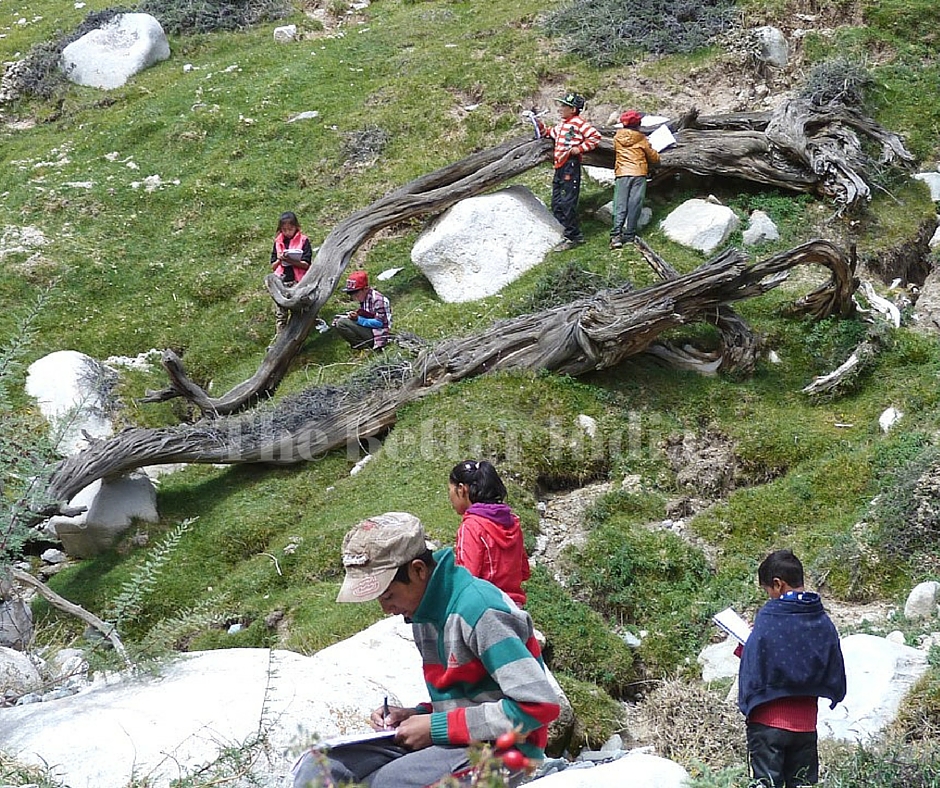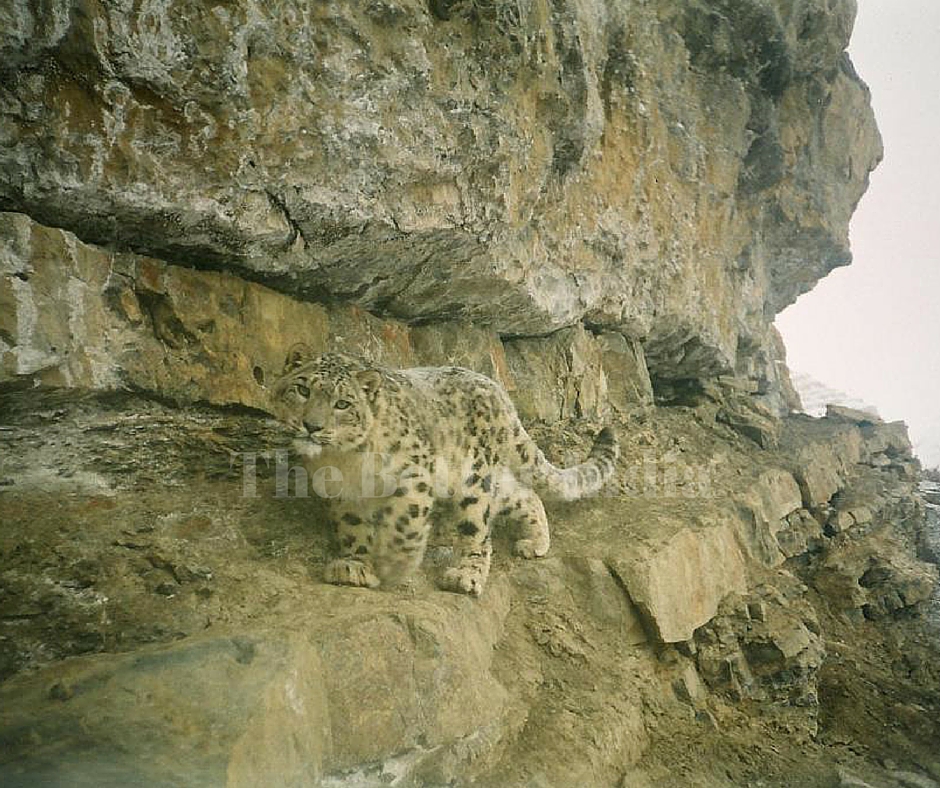How 12 Countries Came Together to Save the Elusive Snow Leopard from Extinction
The existence of the snow leopard indicates a healthy eco-system. But they fall under the category of threatened species now. Read how twelve Asian countries that are home to the snow leopard decided to work together to save the wild cat and dedicated a day, October 23, to raise awareness about its plight.

The existence of the snow leopard indicates a healthy eco-system. But they fall under the category of threatened species now. Read how twelve Asian countries that are home to the snow leopard decided to work together to save the wild cat and dedicated a day, October 23, to raise awareness about its plight.
The National Heritage Animal of Afghanistan and Pakistan and the State Animal of Himachal Pradesh, the snow leopard, is one of the most difficult predator animals to see in the wild. It lives in barren landscapes in high mountainous areas where there was, till a few decades ago, not much human civilization.
However, with growing population and with the destruction being caused to the environment, even the habitats of these animals have been encroached upon and they fall under the category of threatened species now.
Twelve Asian countries that are home to the snow leopard decided to dedicate a day to this iconic species to raise awareness about the plight of this wild creature.

Photo: Snow Leopard Trust/Steve Tracy
Last year, cat lovers across the world decided to celebrate International Snow Leopard day on October 23.
The day also marked the first anniversary of the adoption of the Bishkek Declaration, which was the first ever Global Forum for the Conservation of the Snow Leopard. The 12 range countries that are home to this elusive cat are: Afghanistan, Bhutan, China, Kazakhstan, Kyrgyzstan, Mongolia, Nepal, Pakistan, Russia, Tajikistan, Uzbekistan, and India. At the Forum, these countries resolved to celebrate 2015 as the International Year of the Snow Leopard.
In the last few years, the international community has taken significant steps to protect this animal, which lives in rather fragmented habitats. However, there is enough indication that the population of snow leopards around the world is very low and needs immediate help – efforts to save it have to be intensified over the coming decade.
For the past couple of decades, these 12 range countries have been working within their own borders to save the species. Snow leopards cross international boundaries in search of food and this makes it difficult to compile statistics.
At Bishkek in 2013, all the 12 countries decided to work on a common platform to protect the fragile habitat of these cats and help save them from extinction.
Photo: NCF-SLT/Rishi Sharma
“The Global Snow Leopard and Ecosystem Protection Program (GSLEP), launched at the 2013 declaration, aims to protect the high mountain ecosystem that is home to these animals. Incidentally, these ecosystems are also watersheds for a major chunk of the world population. If these regions go unprotected, millions of people will be seriously impacted negatively,” says Dr. Pranav Trivedi, a scientist with the Nature Conservation Foundation (NCF).
The existence of this large predator in these regions is an indicator of a healthy ecosystem. By protecting the local environment, the governments of these 12 countries are not only protecting snow leopards but also all other life forms that live there, including human beings.
Photo: Pranav Trivedi
In India, snow leopards are found in the barren landscapes of the Trans-Himalayan region, that is, in the states of Jammu and Kashmir, Himachal Pradesh, Uttarakhand, Sikkim, and Arunachal Pradesh. NGOs like NCF, along with the India Programme of the Snow Leopard Trust (SLT), have been making major efforts to help save snow leopards in India. The two regions in which they have been working for over 10-15 years are the Spiti Valley in Himachal Pradesh and the Ladakh area of Jammu and Kashmir.
In both Spiti and Ladakh, the Buddhist agro-pastoral communities occupy the region and have been living in these harsh landscapes for centuries. They grow barley and peas and herd yaks, donkeys, goats, sheep, horses, and cattle in the short summer season.
Photo: NCF-SLT
“A study of the human–animal interface in this region was conducted in the late 1990s by Dr. Charudutt Mishra of NCF. His research highlighted that carnivores like the snow leopard and the Tibetan wolf were predating on the livestock causing heavy monetary losses to the locals. The locals had retaliated by killing these predators and also their cubs, trying to make sure that they solve the problem for a long period. Population of wild prey species like bharal and ibex had also dwindled and hence attacks on livestock were high,” says Pranav, who is also the Education Consultant for the Snow Leopard Trust (SLT), India Programme.
Based on several years of research, NCF, SLT and the local communities initiated a unique three-pronged conservation program, which involved reducing the loss of livestock owned by the locals, restoring the abundance of wild prey for the predators and developing a viable system of monetary compensation for livestock loss. Apart from this they have also been working on educating the children and teachers in their nature camps making them aware about the wildlife around them and stressing on the need for conservation.
To help reduce the loss of livestock, the NGOs made sure that vigilant herding of livestock takes place with newly appointed guards to herd the cattle and sheep.
Photo: Pranav Trivedi
Moreover, they suggested that some portions of the pastures be left untouched by domestic livestock. Soon, in these areas, wild ungulates began grazing and since their numbers started increasing, the predators found natural prey to feed on. To help in monetary compensation for loss of livestock, the NGOs helped the villagers set up insurance schemes. Since the villagers pay the premium and the schemes are run by the villagers themselves they find that the compensation they receive when they lose livestock is a lot more than what the government gives them.
“Building awareness and spreading education is very important. Some of the locals send their children out into other parts of the country to get them educated. However, the children who grow up in these harsh areas have local schooling and we take pleasure in conducting nature camps for them,” says Pranav.
Conducting a census of wild animals, in the right sense of the word, is not very easy in this part of the world. But scientists and researchers feel it may not be necessary to have a specific count of a particular wild animal. More than the numbers for statistical purposes, it is important that their habitats be protected and human attitude towards nature and towards these animals be changed.
With regular monitoring, spotting wild animals will become a lot easier. Camera traps have come in very handy in these areas.
Photo: NCF-SLT/Rishi Sharma
In July 2015, when snow leopard movement was caught on camera in Uttarakhand, it made headlines in the media. Camera recordings help in the study of these elusive animals. Periodic monitoring of the animals and their movements will help in research and also in making plans for conservation.
It is important for people to welcome and appreciate the efforts being made by the governments of the 12 home countries of the snow leopard. The work being done by the Snow Leopard Trust, along with NGOs like NCF, will go a long way in protecting the eco system in the high mountains and, in turn, help human beings live a better life down here in the plains.
You can learn more about conservations efforts to save the snow leopard in India by visiting this website: http://www.snowleopard.org/learn/program-countries/india
Like this story? Or have something to share? Write to us: [email protected], or connect with us on Facebook and Twitter (@thebetterindia).
This story made me
- 97
- 121
- 89
- 167
Tell Us More
We bring stories straight from the heart of India, to inspire millions and create a wave of impact. Our positive movement is growing bigger everyday, and we would love for you to join it.
Please contribute whatever you can, every little penny helps our team in bringing you more stories that support dreams and spread hope.
























